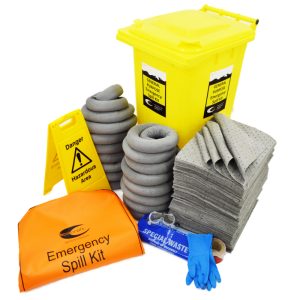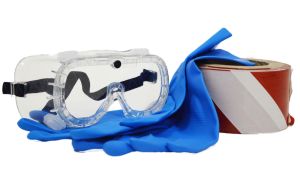We use cookies to make your experience better. To comply with the new e-Privacy directive, we need to ask for your consent to set the cookies. Learn more.
Top 10 tips for choosing the right spill kit

Use our top 10 tips to make sure you select the correct spill kit for your needs.
1. What is your site like?
Check for drains and other outlets, and how the site orientates towards these drains and outlets. If there are drains, you’ll need to ensure the correct drain protection covers are gained and included in the spill kit.2.Where would be the best location for the spill kit?
A spill kit needs to be easily accessible if there’s an emergency spill.3.What type of liquids do you have on site?
There are general-purpose kits, hydrophobic kits and some suitable for dealing with chemical spills. Having the correct spill kit is essential.4. What volume of liquid could be spilt?
Bigger volumes will require several or bigger spill kits5. Would it be beneficial and safer to have one big spill kit or several smaller ones?
Large spills can often be dealt with better, by using 3 or 4 smaller kits, positioned strategically, rather than 1 or 2 large ones, because this gives you the ability to attack the spill from different angles, at the same time.6. What PPE do you need? 
If you’re including PPE within the kit, make sure it’s suitable and safe to use with the liquids you could spill.7. What are the best spill products needed for your spill kit?
Make sure you have the correct mix of spill materials, Eg: booms, mats or pillows.8. Are the liquids you use hazardous?
If so, you will need hazardous waste disposal bags to ensure safe disposal. Ensure you have sufficient quantities in your kits9. Do you have a spill reporting process in place?
After a spill, you will need to make a report of what happened and the response. Ensure there are robust auditing and reporting systems in place. Spill kits are like fire extinguishers and when you need them, they need to be fit for purpose, so replenish used spill kit products regularly.10. Do you have the correctly trained staff, to react and deal with a spill?
Staff need to understand the importance and urgency of managing a spill as well as having an understanding the the equipment available to them. Training your staff in spill response will give them the confidence to manage any spill emergency effectively.A spill incident can have a devastating impact on your workforce and business. If you get it wrong, as well as the possibility of injuries to your workforce and environmental damage, you could face huge fines, receive bad publicity and even a jail sentence, so it is not worth the risk.
Our expertise is spill management. Our robust spill management solutions will keep you compliant and safe, as well as save you time, hassle and money. We’re always ready to support you and provide a free site spill survey, to identify ‘at-risk’ areas and provide solutions to suit your needs.
To book your free site survey contact us now, or contact our spill team T: 01606 352 679 or E: [email protected]
You May Also be Interested In:
-

Site Survey
We assess your site, equipment, and spill training procedures, highlighting any potential danger zones that are apparent on site.
Read More -

Spill Training
Spill training courses designed to ensure your team are fully compliant and confident to prevent and deal with any spill incident.
Read More -

Managed Spill Service
A complete solution that we manage on your behalf, providing appropriate spill products with a regular audit and replenishment service
Read More -

Spill Equipment
Wide range of equipment to help prevent or respond to spills safely. Including safe storage, trollies, spill kits, PPE and much more
Read More

